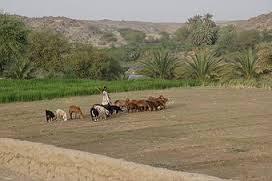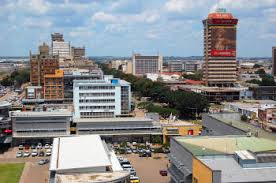Negotiating Knowledges for Development – DPRN Three
A Tribute to Saartjie Baartman
I’ve come to take you home –
home, remember the veld?
the lush green grass beneath the big oaks trees
the air is cool there and the sun does not burn.
I have made your bed at the foot of the hill,
your blankets are covered in buchu and mint,
the proteas stand in yellow and white
and the water in the stream chuckle sing-songs
as it hobbles alone over little stones.
I have come to wretch you away –
away from the poking eyes
of the man-made monster
who lives in the dark
with his clutches of imperialism
who dissects your body bit by bit
who likens your soul to that of Satan
and declares himself the ultimate god!
I have come to soothe your heavy heart
I offer my bosom to your weary soul
I will cover your face with the palms of my hands
I will run my lips over lines in your neck
I will feast my eyes on the beauty of you
and I will sing for you
for I have come to bring you peace.
I have come to take you home
where the ancient mountains shout your name.
I have made your bed at the foot of the hill,
your blankets are covered in buchu and mint,
the proteas stand in yellow and white –
I have come to take you home
where I will sing for you
for you have brought me peace
Diana Ferrus
Saartjie Baartman
This poem, written by the South African Diana Ferrus, refers to the return of Saartjie Baartman to her home country. On Women’s Day, 9 August 2002, the remains of Saartjie Baartman were finally laid to rest in the area of her birth, the Gamtoos River Valley in the Eastern Cape. Thus ended a long period of exile in life and in death of a young Khoikhoi woman, who was to become an icon in South Africa as a victim of the horrors of colonialism and racism.
Born in 1789 and orphaned in a commando raid, Saartjie Baartman became the servant of the Dutch farmer Johan Cezar near Cape Town. When his brother Henrik Cezar and his friend, the ship’s doctor William Dunlop, visited Johan in 1810, they met with Baartman and convinced her that it would be to her advantage to accompany them to Europe. Each for his own reasons wanted to make the most out of her physical characteristics. From the 17th century onward, Europeans had been fascinated by the steatopygia, the broad hips and large buttocks, of Khoikhoi women. Furthermore, Khoikhoi women knew the custom of elongating the labia to conform to an ideal of beauty. The resulting sinus pudoris, or ‘curtain of shame’ equally was a source of fascination frequently mentioned in both popular and scientific literature. Read more
Land And Agrarian Reform In South Africa: Caught By Continuities – DPRN Six
Introduction
Land and agrarian reform is often implemented with a view to breaking with the past, particularly by transforming ownership of land and its uneven distribution. The post 1994 land and agrarian reform in South Africa began with a similar agenda. In fact land reform was launched and implemented even before Apartheid was dissolved and the new ANC-led government took control. The Apartheid government under F.W. De Klerk initiated some kind of limited land reform during the period from 1990 to 1993.
In March 1991, De Klerk’s government repealed the 1913 and 1936 Land Acts. In November of the same year it appointed an Advisory Committee on Land Allocation (later renamed as the Commission on Land Allocation). The Commission made recommendations on state land disposal and the restoration of land to those disposed of formal land rights. This happened first in Natal, where dispossessed communities in Richards Bay (van Leynseele and Hebinck, 2008), Roosboom, Charlestown and Alcockspruit got their land rights formally restored in the years 1992-93 through this process (Walker 2004). The strengths and weaknesses of the pre-1994 land reforms were replicated post-1994 in the form of a lack of ‘coherent state procedures and institutional inadequacies’ to manage the land reform process (Walker 2004; 2005).
This paper explores the institutional dynamics by pursuing the argument that contemporary land reform policy and practices are characterised by continuities, rather than by discontinuities. Given the radical policy discourse of Reconstruction and Development, political and economic transformation, one may expect more discontinuities to occur than continuities. The shift from the early emphasis on human rights to paternalism and ‘productionism’ (from LRAD to SLAG) is testimony of what we would brand as continuities. The assumption of our investigation is that during Apartheid land use on white-owned farms was production and market oriented. Discontinuities no doubt occur; towards the end of the paper we will provide a few examples that show that land once designated for white ownership and ‘commercial agriculture’ is now being redeveloped into land owned by black people who by and large use the land – quoting an informant one of us spoke to in November 2007 in the Eastern Cape – ‘the African way’.[i]
The organising notion of continuity (and discontinuity) is useful for an analysis of changes over time. Continuity refers to the state of uninterrupted flow or coherence, or the property of a continuous and connected period of time (Oxford English Dictionary). Synonyms are persistence, enduringness, durability, lastingness, strength or permanence by virtue of the power to resist stress or force. The continuities that will be explored in this paper relate to the agricultural expert system that has gradually evolved in South Africa and which plays a prominent role in the design of land reform. The persistence of continuities would then indicate the extent to which dramatic transformations of the institutional infrastructure in agriculture have occurred. Historical analysis allows us to underline the continuity of prescriptions and modes of ordering in the past and present. Distinctions between the pre-apartheid, apartheid and post-apartheid periods belie the existence of important continuities.
The setting is the Eastern Cape Province, notably the regions formerly known as Ciskei and Transkei. The case material to underline the argument of continuity rather than discontinuity are entrenched in the prescriptive policies of the state with regard to land use as well as in the multiple responses of land users. Such policies are largely informed by agricultural expert opinions with regard to land use such that they have helped to create and order South Africa’s agrarian landscapes. The Glen Grey Act of 1894 evolved into Betterment Planning practices dictating and attempting to change land use patterns. Current land reform policies aim to prescribe similarly land use by paternalistically fixing land reform subsidies to forms of land use that fit into the category of ‘commercial agriculture’. Like James (2007), we intend to pursue the provoking argument that the current Department of Land Affairs (DLA) and National and Provincial Departments of Agriculture are rather similar to their Apartheid era predecessors, the Department of Native Affairs and the Native Agricultural and Lands Branch. Read more
Donors and Governance in Southern Africa. The Case of Zambia, with Zimbabwe as a Counterpoint – DPRN Seven
Introduction: On donors and governance [1]
A key change in development policy since the early 1990s has been donors’ shift towards a principal concern with governance. Earlier, donors’ policy and practice had been mainly focused on filling gaps in knowledge, capital or foreign exchange. This implied that development was fundamentally a mechanical, technical undertaking. Gradually, however, development policy is being seen more and more as a political enterprise. Issues such as the division of power between the elite and society at large, basic freedoms and economic inclusiveness are at least as important for societal and economic development as technical considerations.[2]
This concern with governance has given rise to a considerable body of literature that has a paradoxical tendency to de-politicise the debate. A reason for this is that politics traditionally does not fit into the non-political mandate of international organisations. Also, declaring a political interest seems to clash with the altruistic rhetoric of the development community. Nevertheless, recent evaluations and analyses have begun to explicitly address the political nature of both the environment in which donors intervene as well as the political influence donors have in processes of change. As an example the Swedish development agency (Sida) commissioned explicit political evaluations of conditional lending, program aid or ownership.[3] The British Department for International Development (DfID) has had a series of studies carried out on ‘Drivers of Change’[4] and Netherlands embassies have undertaken Strategic Corruption and Governance Analyses that aim to look ‘behind the façade’ at what drives political and bureaucratic behaviour.[5] These analyses see aid as an influence on local society that is, in turn, shaped by the local political process. This thus explicitly links aid effectiveness to the quality of governance. Read more





